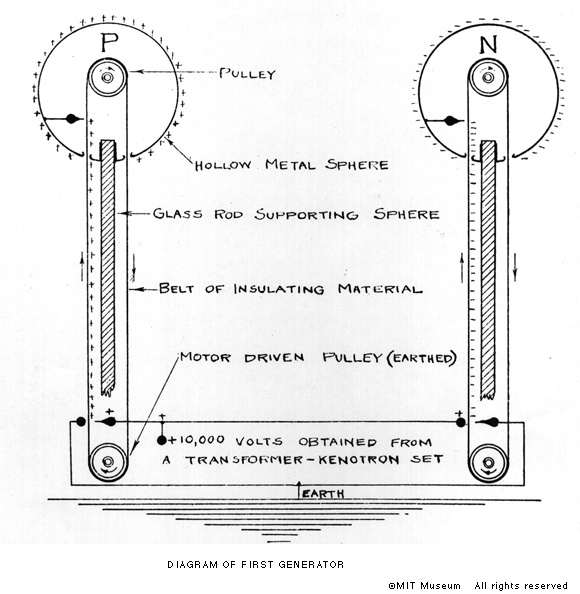Van de Graaff generators were originally designed by Robert J. Van de Graaff as a way to generate high voltages used for atom-smashing.

Van de Graaff generators work by a completely mechanical method. A pointed conductor "sprays" positive charge onto the moving belt. The belt carries the positive charge to the interior of the dome where it is repelled off to the outside surface of the dome. As the positive charges accumulate, the sphere gains higher potential relative to the ground. A potential as high as 30 million volts can be obtained by this device!! In the original design, an evacuated tube (one with all the air sucked out) is attached to the domes, and a series of Hydrogen or Helium ions is accelerated toward a target.
In our example, the proton beam then gains a kinetic energy of 30 MeV and is accelerated toward a grounded nuclear target.
The Important Part: The mechanical system of a Van de Graaff generator does work to create an electric potential difference!